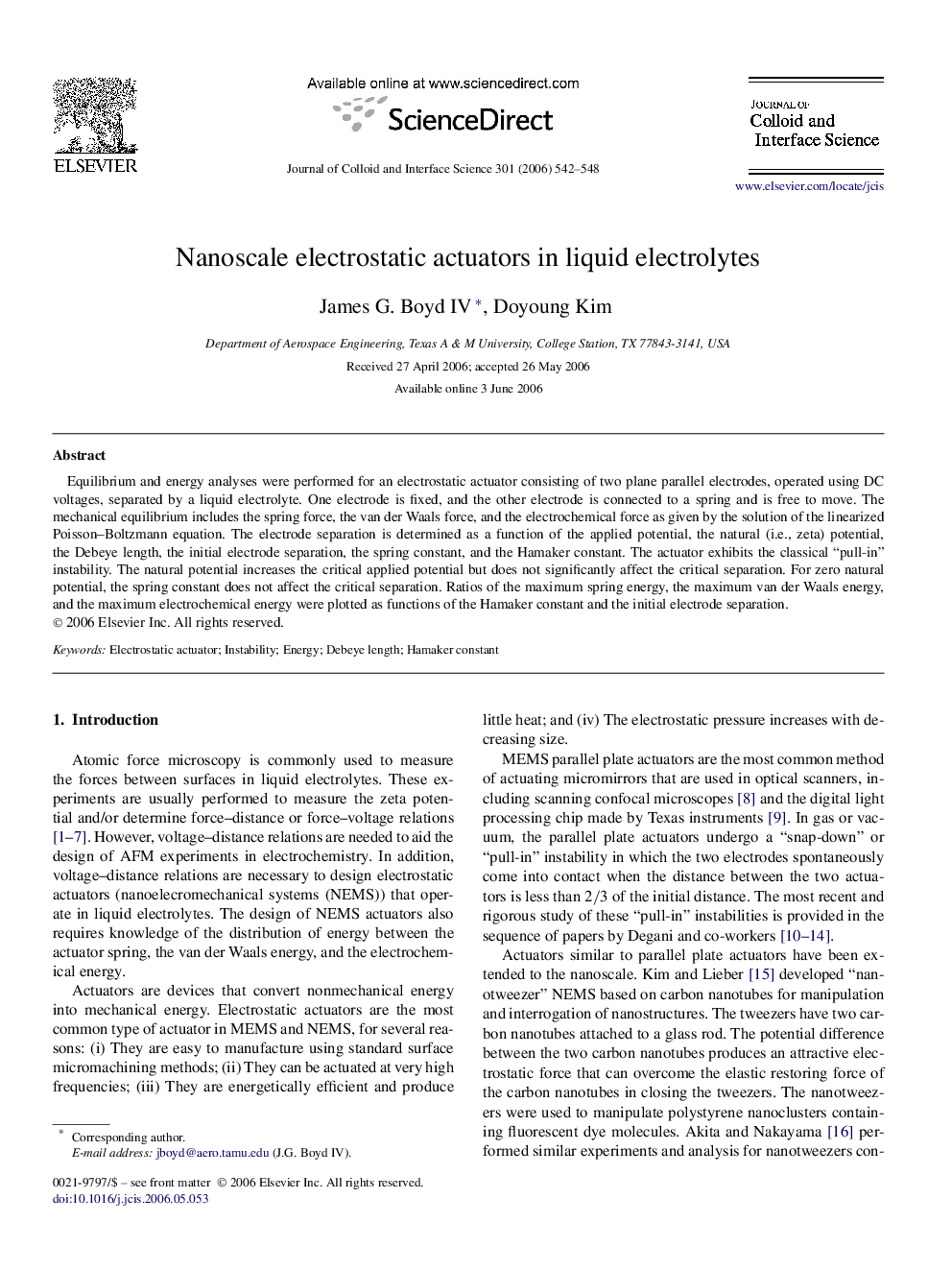| Article ID | Journal | Published Year | Pages | File Type |
|---|---|---|---|---|
| 612616 | Journal of Colloid and Interface Science | 2006 | 7 Pages |
Equilibrium and energy analyses were performed for an electrostatic actuator consisting of two plane parallel electrodes, operated using DC voltages, separated by a liquid electrolyte. One electrode is fixed, and the other electrode is connected to a spring and is free to move. The mechanical equilibrium includes the spring force, the van der Waals force, and the electrochemical force as given by the solution of the linearized Poisson–Boltzmann equation. The electrode separation is determined as a function of the applied potential, the natural (i.e., zeta) potential, the Debeye length, the initial electrode separation, the spring constant, and the Hamaker constant. The actuator exhibits the classical “pull-in” instability. The natural potential increases the critical applied potential but does not significantly affect the critical separation. For zero natural potential, the spring constant does not affect the critical separation. Ratios of the maximum spring energy, the maximum van der Waals energy, and the maximum electrochemical energy were plotted as functions of the Hamaker constant and the initial electrode separation.
Graphical abstractAn electrostatic actuator in a liquid electrolyte is modeled. The electrode separation is determined as a function of the applied potential, the natural (i.e., zeta) potential, the Debeye length, the initial electrode separation, the spring constant, and the Hamaker constant.Figure optionsDownload full-size imageDownload as PowerPoint slide
